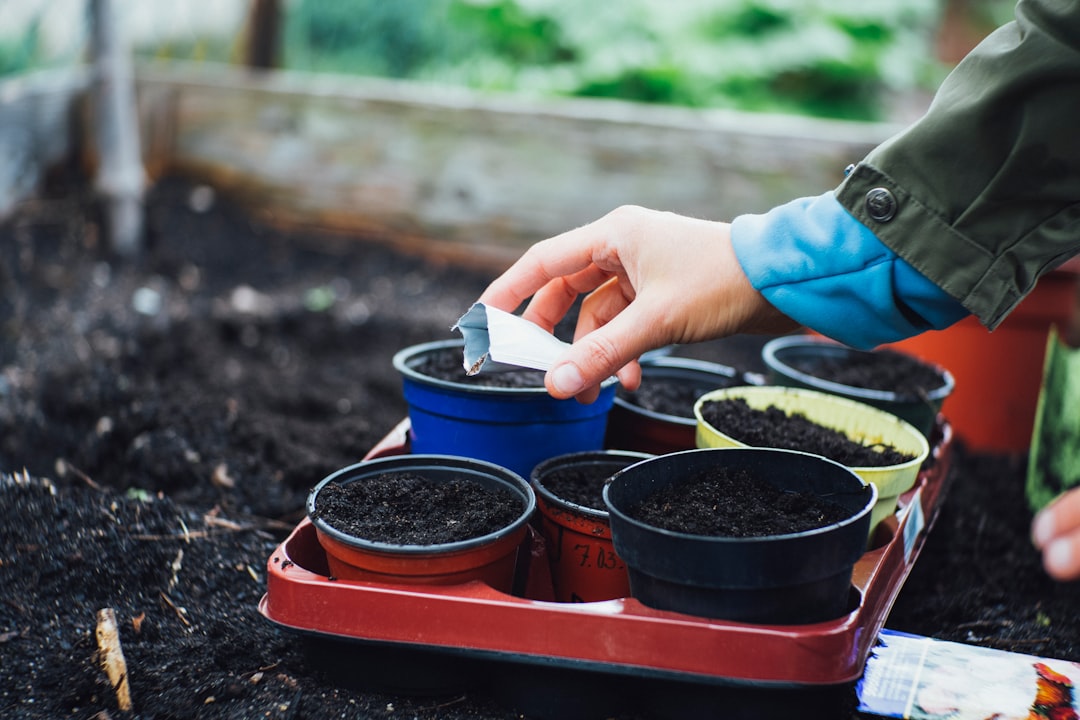Compost is often called "black gold" for a good reason. It enriches soil, improves structure, and supports a thriving ecosystem of beneficial microbes. Whether you're an experienced gardener or just starting, incorporating compost into your garden is one of the best ways to promote long-term soil health and plant growth.
In this post, we’ll explore why compost is essential for healthy garden soil, how it benefits your plants, and how to make and use compost effectively.
Why Compost is Essential for Soil Health
Soil is the foundation of every successful garden, and compost is one of the best tools for improving and maintaining it. Unlike synthetic fertilizers, which provide only short-term nutrients, compost nourishes the soil naturally by adding organic matter and supporting a balanced ecosystem.
Key Benefits of Compost:
✅ Enhances Soil Structure – Loosens compacted soil, improving aeration and root growth.
✅ Boosts Water Retention – Helps sandy soil hold moisture while improving drainage in clay soil.
✅ Feeds Beneficial Microorganisms – Supports bacteria, fungi, and earthworms that break down organic matter and release nutrients.
✅ Reduces Dependence on Synthetic Fertilizers – Provides slow-release nutrients for plants without chemical runoff.
✅ Balances Soil pH – Helps neutralize overly acidic or alkaline soils, creating a more stable environment for plants.
✅ Suppresses Plant Diseases and Pests – Healthy, nutrient-rich soil makes plants stronger and more resilient.
✅ Reduces Waste – Turns kitchen scraps and yard waste into a valuable resource instead of sending them to landfills.
How Compost Improves Different Soil Types
Different soil types have unique challenges, and compost helps correct many of them:
-
Clay Soil → Compost breaks up dense particles, improving drainage and preventing compaction.
-
Sandy Soil → Compost increases moisture and nutrient retention, preventing nutrients from washing away.
-
Loamy Soil → Even well-balanced soil benefits from added compost to maintain fertility and structure.
Regardless of your soil type, adding compost will make it more productive, fertile, and resilient over time.
What to Compost: The Right Ingredients
Compost is made up of green (nitrogen-rich) materials and brown (carbon-rich) materials that break down over time to form nutrient-rich humus.
Green Materials (Nitrogen Sources):
-
Fruit and vegetable scraps
-
Coffee grounds and tea leaves
-
Grass clippings
-
Manure (from herbivores like cows, horses, and chickens)
-
Eggshells
Brown Materials (Carbon Sources):
-
Dry leaves
-
Straw or hay
-
Shredded newspaper or cardboard (non-glossy)
-
Wood chips or sawdust (in small amounts)
What NOT to Compost:
🚫 Meat, dairy, or greasy foods (attracts pests)
🚫 Pet waste (may contain harmful bacteria)
🚫 Diseased plants (can spread disease)
🚫 Glossy paper or treated wood (contains harmful chemicals)
A good compost pile should have a balanced mix of green and brown materials to ensure proper decomposition and prevent odors.
How to Make Compost: Simple Methods
Composting can be done in many ways, depending on space, climate, and preference. Here are three common methods:
1. Traditional Compost Pile
-
Choose a well-drained spot in your yard.
-
Layer greens and browns in a 3:1 ratio (three parts brown to one part green).
-
Keep the pile moist but not soggy (like a damp sponge).
-
Turn the pile every 1–2 weeks to speed up decomposition.
-
Ready-to-use compost can take 2–6 months, depending on conditions.
2. Compost Bin or Tumbler
-
A great option for small spaces or urban gardeners.
-
Bins and tumblers help control temperature and moisture, accelerating composting.
-
Turn or spin regularly for faster decomposition.
3. Vermicomposting (Worm Composting)
-
Uses red wiggler worms to break down food scraps into nutrient-rich castings.
-
Ideal for indoor composting or small spaces.
-
Produces high-quality, fast-acting compost perfect for garden beds and potted plants.
How to Use Compost in Your Garden
Once your compost is dark, crumbly, and has an earthy smell, it’s ready to use. Here are the best ways to apply compost to your garden:
1. As a Soil Amendment
-
Mix 1–3 inches of compost into garden beds before planting.
-
Improves soil structure and nutrient availability.
2. As a Mulch
-
Apply a 1–2 inch layer around plants to retain moisture and suppress weeds.
-
Helps regulate soil temperature.
3. In Potting Mixes
-
Combine one part compost, one part garden soil, and one part sand or perlite for a balanced mix.
-
Great for container gardening.
4. As Compost Tea (Liquid Fertilizer)
-
Soak a shovel-full of compost in a bucket of water for 24–48 hours.
-
Strain and use the liquid to water plants for a quick nutrient boost.
Frequently Asked Questions About Compost
1. Why does my compost smell bad?
A foul odor means too much nitrogen (green material) or excess moisture. Add more browns (dry leaves, shredded paper) and turn the pile to aerate it.
2. How long does compost take to break down?
Depending on conditions, it can take 2–6 months. Warmer temperatures and regular turning speed up the process.
3. Can I compost weeds?
Yes, but only if they haven’t gone to seed. Otherwise, they may sprout in your garden.
4. Do I need to turn my compost pile?
Turning aerates the pile and speeds up decomposition, but a "cold" compost pile will still break down over time without turning.
The Bottom Line: Compost is the Key to Healthy Soil
Building healthy garden soil starts with compost. Whether you're improving sandy soil, breaking up clay, or maintaining fertile loam, compost provides essential nutrients, enhances structure, and supports a thriving soil ecosystem.
By making and using compost regularly, you'll reduce waste, grow stronger plants, and create a self-sustaining, environmentally friendly garden.
So start composting today—your garden (and the planet) will thank you!

Comments
No comments yet. Be the first to comment!
You must be logged in to comment. Login